ASUS Crosshair III Formula Motherboard Review
Board Images
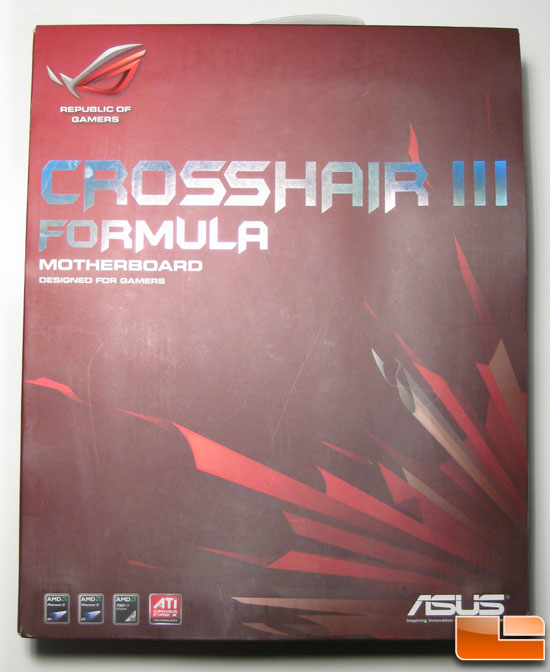
To kick things off ASUS has a rather sleek yet simple box to house the Crosshair III Formula. The box design is best described as vibrant with the Republic of Gamers logo clearly visible, and the CPU and GPU compatibility icons are displayed on bottom.
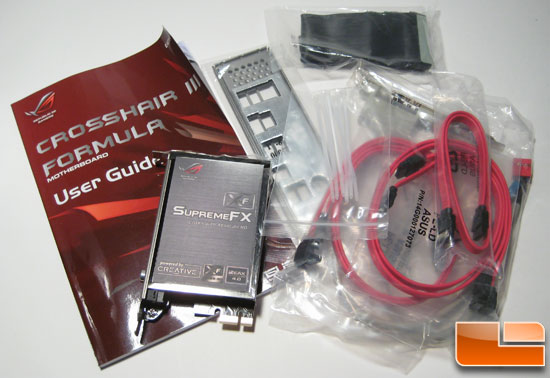
Like all Republic of Gamers boards the Crosshair III Formula comes equipped with a SupremeFX X-Fi audio card in the bundle. Otherwise, the bundle is identical to all other boards with your handful of SATA cables, manual, and that archaic IDE cable.
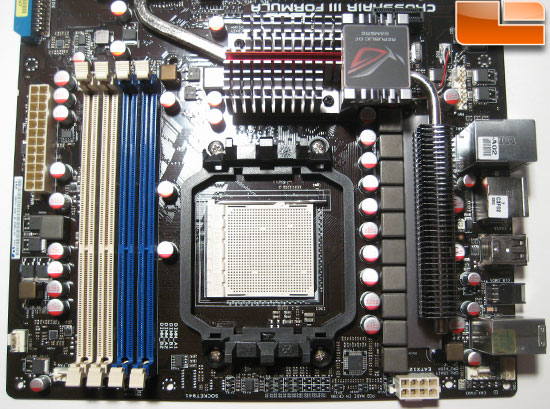
The top of the board is crowded with a 8+2 PWM to feed the CPU, the 790FX northbridge heatsink, and PWM heatsink. Hiding on the bottom right corner of the above image is the port for the LCD Poster peripheral which provides POST data along with voltage and temperature data. One thing that stood out with this board was the sheer amount of fan headers on the board; here you can see a total of 4 just to service the CPU, PWM, and memory.
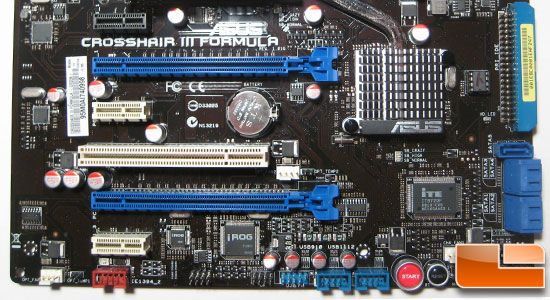
Continuing with the fan header shoutout, you can find another three on the bottom half of the board. The bottom half of the board holds the SB750 southbridge with its 5 SATA2 connectors, the socketed BIOS chip, and the PCIe and PCI expansion slots. Hidden by the Legit Reviews logo is the MemOK! button which I found to be quite useful while overclocking the DDR3. When you have a failed overclock due to too tight of memory timings or high memory speeds you can simply mash the MemOK! button and it’ll partially reset the BIOS with memory speeds and timings that any stick can pass. I believe it defaulted to DDR3-1333 CAS9, easy to do versus the DDR3-1800 CAS6 I was attempting when I had to use MemOK. All in all, I like all the features included on this half of the board except for one rather huge portion, the expansion slot layout. Below I’ve included a picture of my M4A79T-Deluxe side by side with the Crosshair III Formula.
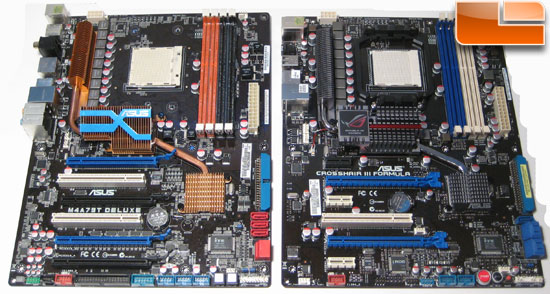
Please ignore the Vaseline in the M4A79T’s DDR3 slots and the conformal coat.
The boards share a lot of features with PCB layout; notice the CPU pwm is identical, but the expansion slot layout is, in my opinion, far superior on the M4A79T-Deluxe. The 790FX chipset features 42 PCIe 2.0 lanes with 36 lanes reserved for GPU slots. On the M4A79T-Deluxe it can run 4 GPUs with PCIe 2.0 x8 connectivity to each slot. The Crosshair III Formula has only two PCIe 2.0 x16 slots and then 2 PCIe 2.0 x1 slots and a single PCI slot. Sure, most end-users aren’t going to use quad HD4890s on a daily basis, but for the select few who do even for brief periods of time M4A79T-Deluxe is the only option here.

Due to offloading the audio expansion to the X-Fi card, the I/O ports on the Crosshair III Formula are rather bare. 6 USB 2.0 ports, a FireWire/800 port, an eSATA port, a gigabit Ethernet port, and a PS/2 port complete the lineup. Quite handy when overclocking is the CMOS reset button, useful when you screw up and have to start fresh.
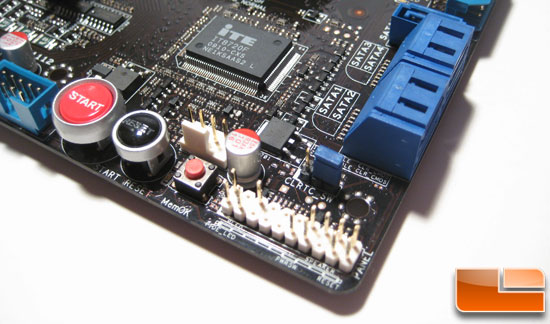
I felt bad not showing the MemOK button, so here we go. There is also the regular clear cmos switch and the nice and bulky start and reset buttons.
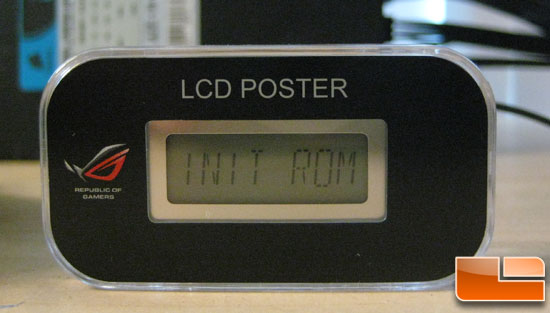
This is the LCD Poster I talked about earlier. This plugs into a port on the board and normally displays diagnostic information like on the X48 Rampage Extreme and X58 Rampage II Extreme. The Crosshair III Formula doesn’t support hardware TweakIt like the Rampage Extremes, but with a PS/2 keyboard the Crosshair III Formula supports keyboard TweakIt. Unfortunately, for this review I couldn’t track down a PS/2 keyboard. However, I was able to watch K|ngp|n use the keyboard TweakIt while pushing a Phenom II past 6GHz on LN2. For extreme overclocking it can be immensely helpful; for daily overclocking it can help transform your docile daily system into a screaming gaming machine with the flick of a few buttons.

Comments are closed.